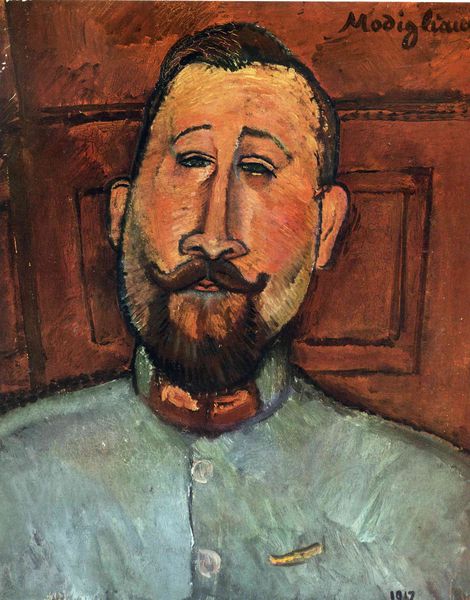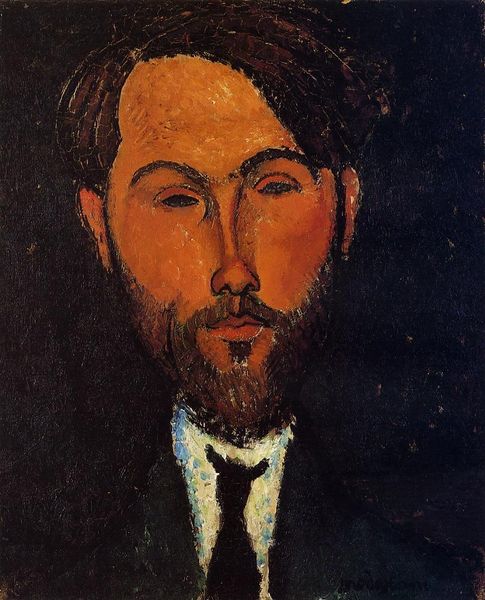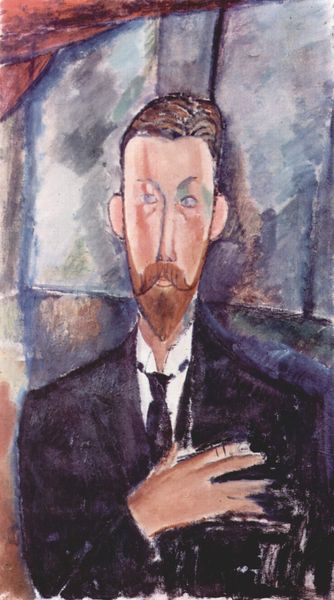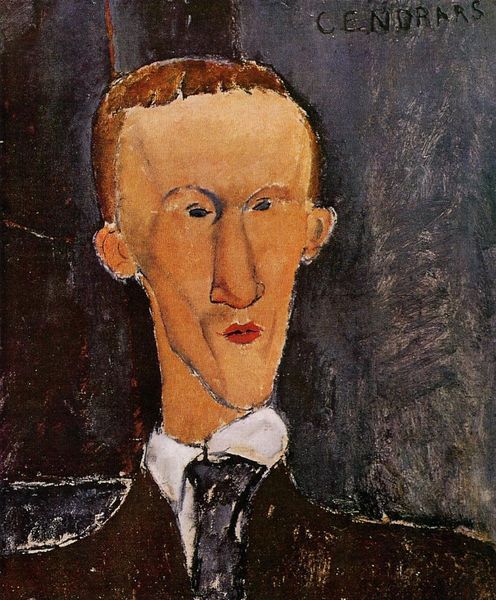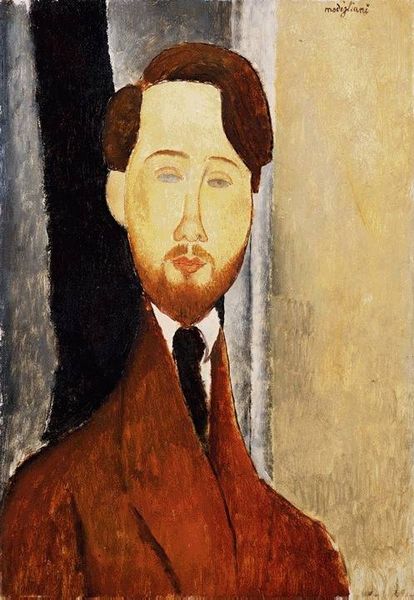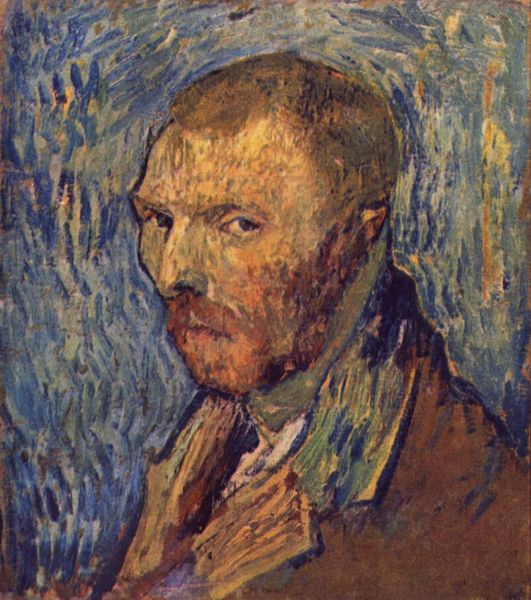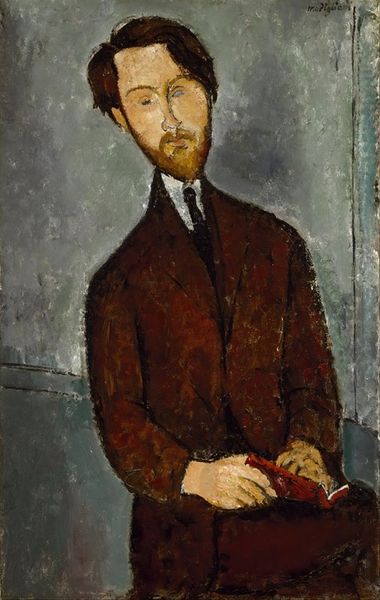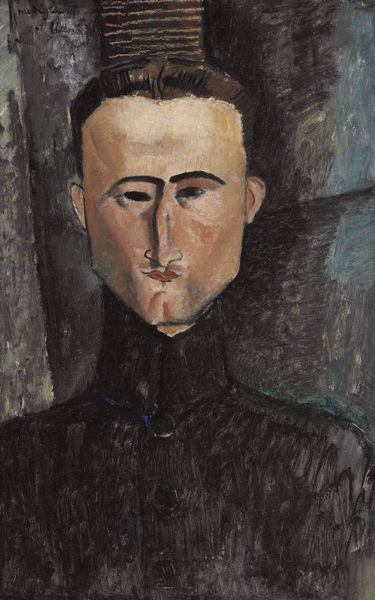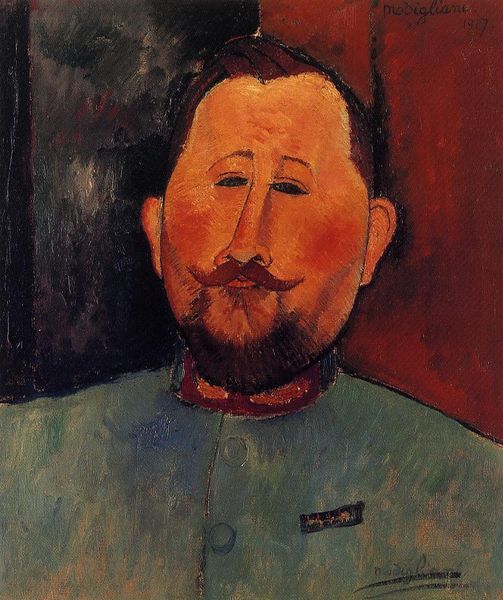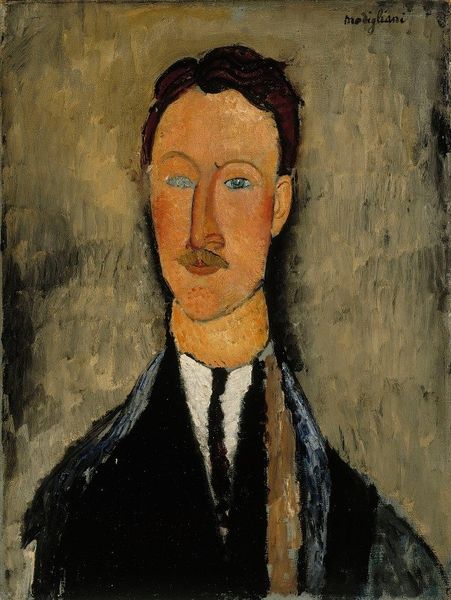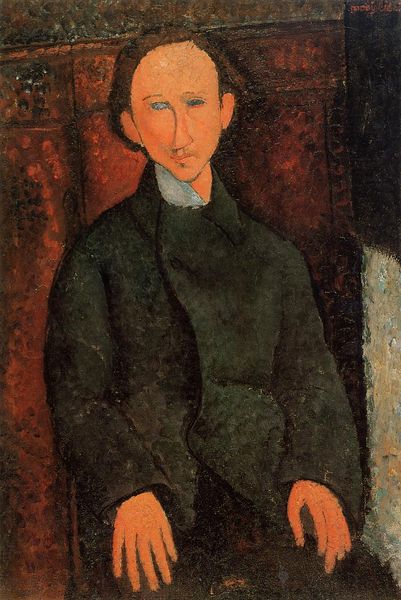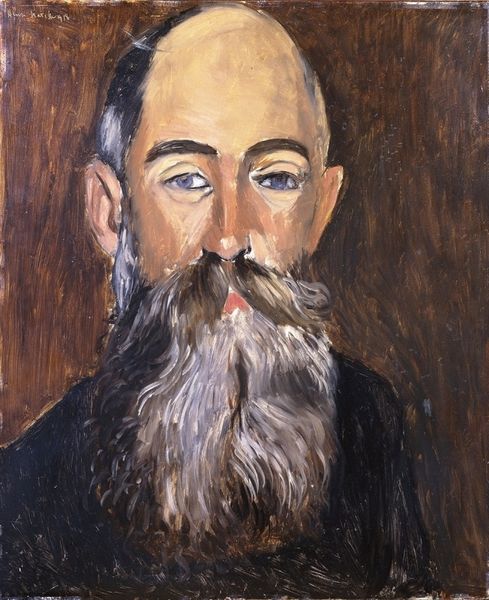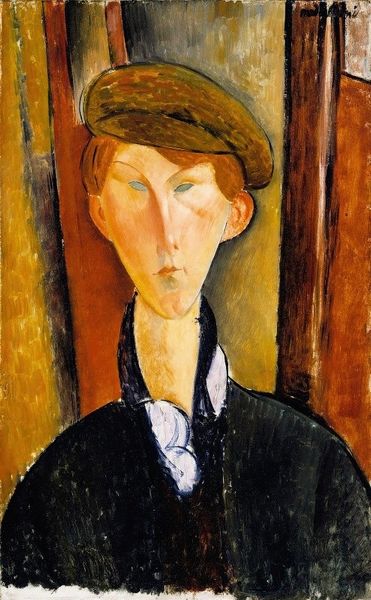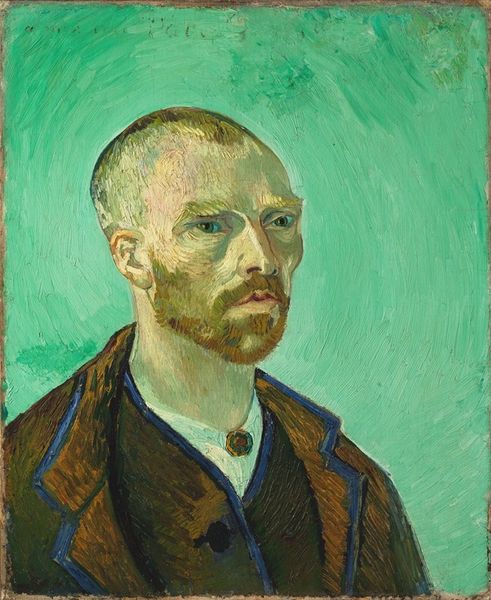
painting, oil-paint
#
portrait
#
painting
#
oil-paint
#
oil painting
#
expressionism
#
italian-renaissance
#
modernism
Copyright: Public domain
Curator: At first glance, the mood is introspective. It’s a portrait seemingly stripped to its bare essentials, the gaze direct yet somehow distant. Editor: Exactly. What you're describing makes sense considering this is Modigliani's "Portrait of the Photographer Dilewski", created in 1916, a pivotal moment during the First World War when everyone’s identity was under enormous social pressure. The piece employs oil on canvas, now residing in a private collection. Modigliani captures something so innately human in Dilewski, but that soulfulness almost seems guarded, right? Curator: It does, and that’s what gets me. It’s like looking into someone's memories – a swirl of emotions, maybe sadness, definitely a depth that most casual portraits miss. The elongated features, a signature Modigliani flourish, accentuate that sense of wistful longing. But there is something profoundly off with this subject, isn't it? It seems the person depicted is concealing his gaze, hiding in plain sight... Editor: The missing pupils definitely contribute to that sense of otherness. From a socio-political perspective, you can consider how early 20th-century portraiture often aimed to convey power and status. Yet here, Modigliani gives us something radically different; almost like an existential questioning of identity amidst global turmoil. Curator: Precisely. It’s less about celebrating social standing, more about exploring inner landscapes. It's an interesting challenge that I find incredibly intriguing, you know? To meet those almond-shaped eyes that show so little, one can find the most elusive details hiding beyond Dilewski's bare features... Editor: Well, its interesting to consider how Modigliani often mixed the classical, almost Renaissance-like stylization, with the raw emotional honesty of modernism. In many ways, this portrait really reflects the anxieties and shifting identities in Europe as it hurtled into modernity. Curator: True, you can almost hear the distant rumble of cannons beneath the carefully chosen browns, blacks and grays! Maybe that’s why I find it so evocative. The tension, the unspoken stories behind Dilewski's blank gaze. It lingers… Editor: Yes, it invites us to not only examine art but to think about the historical moment in which it was produced, and how those socio-political realities shape our interpretation of the human experience, doesn't it? It leaves us with something to ponder.
Comments
No comments
Be the first to comment and join the conversation on the ultimate creative platform.
